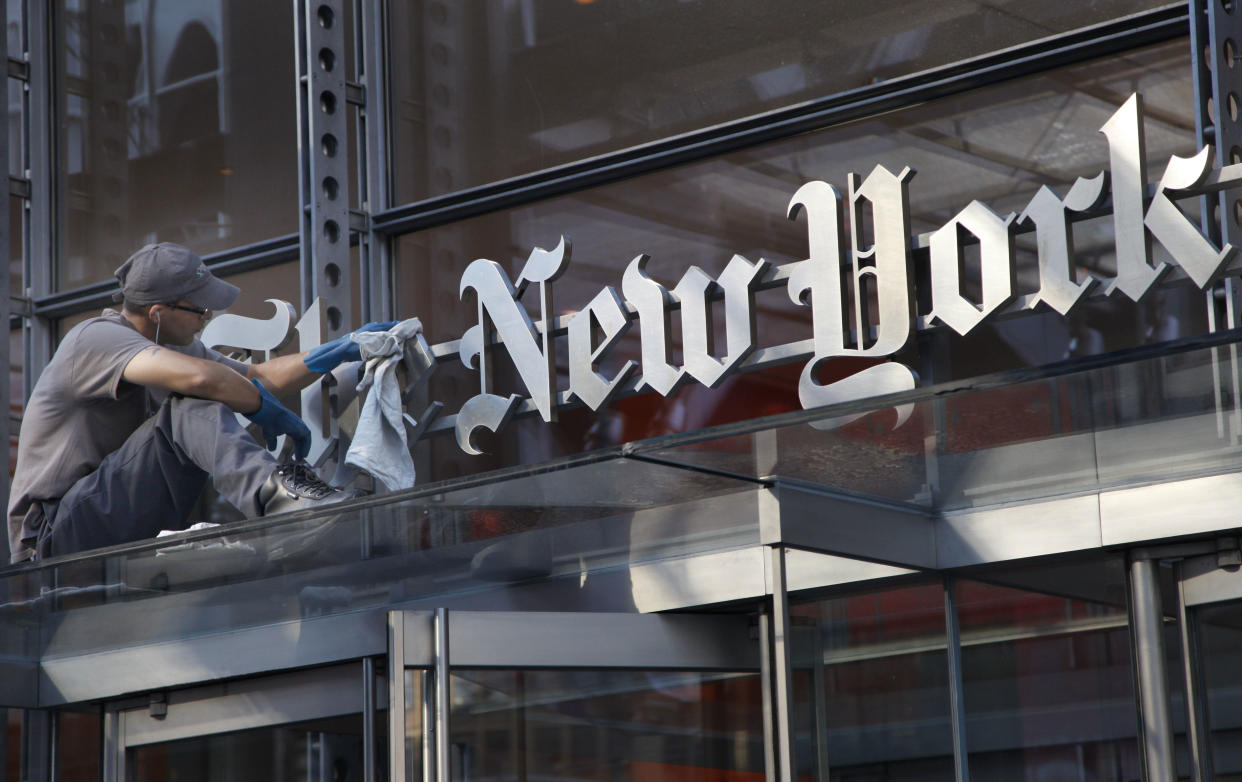When Comedy Fails, The New York Times Promos Always Entertain

When other forms of comedy fail—and they’ve failed a lot lately, with the box-office splat of films like Booksmart and Long Shot—the New York Times subscription blitz is usually good for a stray laugh. At least 41 times since March 19 (and I probably missed some), the Paper of Record has peppered my in-box with supercharged promotions, promising “clarity,” “insights,” “investigations,” and, above all, “the truth,” usually for just $1 a week.
What’s comic is the breathless urgency with which the offers land. Most come in the form of a “Deadline Sale” that is—Oh, no!—just about to expire. “Ends soon,” said the first in the series, a little over three months ago. “Final hours,” read the warning on March 31. “Tomorrow it’s over,” was the word on April 10. “One day only,” would-be subscribers were told on May 8. (And the real joke is that I’m already a subscriber, at a much higher print-plus-digital price, and have been for years.)
Related stories
CBS Posts Strong Upfront Ad Sales Gains, Especially In Primetime And Late Night
Netflix 'Stranger Things' Team-Up With Coca-Cola Revives 'New Coke'
'The Weekly' Teaser & Premiere Date: FX's New York Times Docuseries
By last Friday, we were back to “Ends soon,” but somehow I doubt it. As Edmund Lee, a New York Times media reporter, made clear in reporting his parent company’s first-quarter results last May, the Times is on something of a digital forced march. The combined number of print and digital subscribers was up 29 percent in the quarter, to 4.5 million, and revenue from digital sources was up 16 percent, to $165.4 million. But to meet a stated target of 10 million subscribers by 2025, the publication, explained Lee, has to keep adding 203,000 subscribers per quarter.
That’s a lot.
To date, the Times has met or beaten its targets with heavy discounts—hence the urgent, $1-a-week sales that are always ending soon. Because of discounting, according to Lee’s report, average monthly revenue from core individual news subscribers actually fell to $11.94 in the last quarter, down from $14.95 three years earlier. Too, the email blasts and other promotional tools are expensive. According to Lee’s piece, marketing costs rose about 50 percent, to $47.5 million, in the first quarter.
Unfortunately, there’s also a moral cost to the Times promotions. In the strict sense, they seem to be accurate: Each of the never-ending deadline sales does appear to terminate, as advertised. But the offers come right back, time after time, turning the ads into a classic illustration of a core journalistic sin—assertions that are accurate, but not quite true.
Mostly, though, the ads are just silly. Nobody smart enough to read the Times really believes the come-on. Those discounts aren’t going to end tomorrow or the next day—not as long as the publication has to keep force-feeding digital growth. (On April 5, the Times email promos offered subscriptions at a staggering $2 per week; within five days, the price, in a ‘one-day’ sale, was back to a dollar.)
So it might be time to ease up on the hype, before it undercuts the mission of an institution whose own ads invite you, seriously, to “join us as we pursue the truth, wherever it leads.”
Sign up for Deadline's Newsletter. For the latest news, follow us on Facebook, Twitter, and Instagram.

